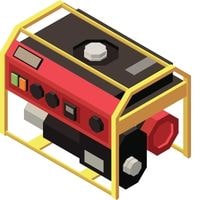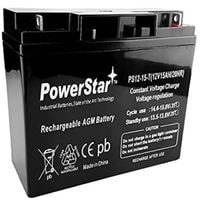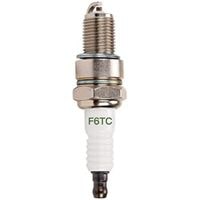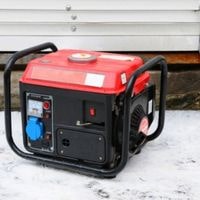Generator won’t start. When your home loses power during unpredictable winters, what do you do? You don’t have to worry about your refrigerated food spoiling in the dark. Your generator will kick in and keep your heating and cooling systems working.
However, what if it won’t start? It’s frustrating when your generator won’t start, and facing extreme cold or heat without power is dangerous.
Here’s how to fix a faulty generator. Follow these simple tips to prevent the most common reasons why generators won’t start.
Generator won’t start
If your generator doesn’t start, make sure that the fuel valve is turned on. Make sure the gas line isn’t clogged.
You’ll want to have a bucket of gasoline on hand when you try this because you’ll need to turn off the valve and then unscrew it to check for clogs in both the fuel line as well as inside of the filter between the valve and carburetor.
Low fuel tank
Your motor needs fuel to run. If your Genset has a gasoline engine, check the fuel levels in the tank and add more fuel if it is low.
For a propane-fuelled generator, check the level of propane in your tank and ensure all the valves and tubes connecting the propane tank to your generator are open.
Other things you will want to make sure are done before you power up include ensuring that any gasoline that was left in the tank from last season has been drained out or removed, as it can damage your generator’s engine by causing varnish to build upon valve seats, rings, and cylinder walls.
You also may want to consider adding some gas stabilizer or ethanol inhibitor before storing any remaining gas for another season.
Dead batteries
Your generator might not start for a number of reasons. You can either have a battery problem or looming connections.
You can try charging the battery via a 12-volt DC outlet or giving it a jump by driving up to it with your car.
Engine oil levels are low
A generator’s engines depend on motor oil. Thus, most generators have a sensor that lets you know when the oil levels are too low, and you need to add more oil.
Check the motor oil level of your generator regularly since this is essential for its proper functioning.
This is a perfect time to swap out your old motor oil for new since it will keep your equipment in good condition and prevent costly breakdowns and emergencies down the road.
Choke control should be adjusted
When starting up a motor, it has to be warmed up first. Closing the choke fully right away can prevent the motor from starting up.
When first starting the engine, make sure you have the choke in its open position; when it begins to warm up make sure you adjust the choke halfway shut until it starts up again.
Defective Spark Plug
Check the spark plug for signs of damage or erosion. Replace the spark plug if the porcelain insulator is cracked, there is a carbon deposit on the tip of the metal portion of the plug, or if the external wire is exposed.
To determine whether a spark is occurring between this part and others, a spark plug tester should be used. It should cause a strong connection when you start the engine.
Faulty Ignition Coil
The ignition coil sends voltage to the spark plug so that the engine can start. When the ignition coil becomes defective, it can pose a problem with starting the engine.
Check the spark plug first because if it is working properly, then you need to check the ignition coil – if you get any faults with your ignition coil tester, then you will need to have the coil replaced.
Dirty Carburetor
It is possible that the carburetor is clogged with gunk. You won’t be able to start your generator right away if the generator is clogged.
Clogs are usually caused by dirty fuel getting mixed in with the good stuff and making a thick, sticky mixture. After just a few days of sitting idle.
It will cause your engine to smoke, cough, and will prevent it from ever starting again. If this is the cause of the problem, try cleaning the carburetor. Rebuild or replace the carburetor if that doesn’t work.
Flywheel Key problem
The flywheel key slot might have sheared or broken. If the flywheel key is damaged, the rotating motion cannot be sustained to turn the engine.
A flywheel key is a small metal component that fits into the crankshaft and engages with the flywheel. You can check whether a flywheel key is in good condition by removing the flywheel and carefully examining its slots.
It’s time to source a new replacement from your local auto parts store if one of the slots is not properly aligned.
Generator won’t start
Related Guides
